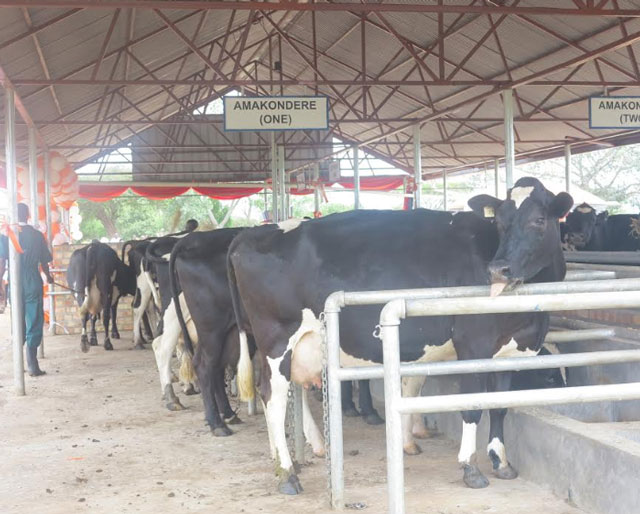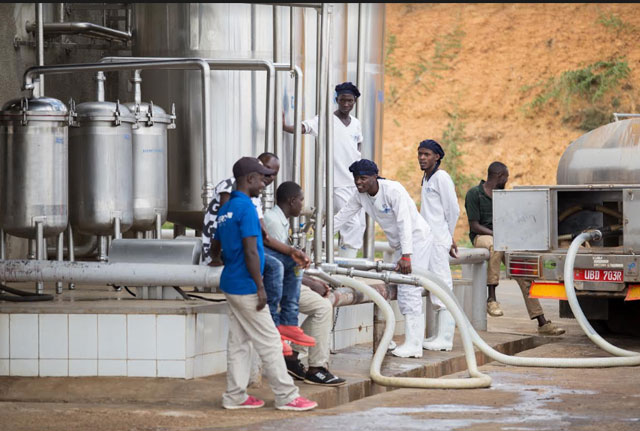
Uganda Dairy sector transformation: where is the financial sector?
COMMENT | Joseph Kiirya | Dairy is one of the few sectors witnessing a positive response in recent years to the Uganda government policy to commercialize agriculture.
In the last four years, Uganda has witnessed an exponential growth in its dairy exports, with the estimated volume of dairy exports increasing from US$30m per annum in 2014 to $130m in 2017, making dairy the third highest agricultural export earner after coffee and tea.
Average annual farm gate prices of milk have also improved over the last three years from Ush600 per litre in 2016 to Ush850 per litre in 2018.
This is encouraging farmers to invest at an unprecedented level to increase production, with many recording doubling of milk sales within the last two years alone.
Some of the top farmers in Uganda now have production systems that rival leading dairy farms in Kenya, who for long were seen as the model dairy farmers for Ugandans to benchmark with.
Despite these radical developments in the sector and its obvious financial potential, the financial sector is still missing in action in playing its role to support sector transformation.
Heavy investment in water and feed
Most of the milk for export is sourced from Southwest Uganda. With fairly large landholdings and with two dry seasons to bridge, key investments for southwest dairy farmers are in water and animal feed.
Most have a source of water (valley dams), but to increase production, water needs to be pumped from the primary source (dam) and distributed within the farm.
This involves a shift from ‘taking cows to the water’ to ‘taking water to the cows’. After all, for every kilometre that a lactating cow needs to walk daily to drink water, milk production decreases by a few litres per day. Similarly, farmers need to invest in ensuring the availability of feed in the dry seasons, either by making hay, silage or improved pasture management.
Over the last three years, hundreds of farmers in Southwest Uganda have invested in water and feed, with average investments ranging from sh50 – 100 million per farm!
In addition to conducive prices, a well-functioning input market, access to technical knowledge and availability of subsidies have had a catalytic effect. But to sustain this market, and to make investments also possible for the thousands of dairy farmers on the cusp of commercialisation, the financial sector needs to up its game.

Banks missing in action
Commercial banks are slow to react to the dynamism in the dairy sector. The current available financial products reflect a lack of understanding of the reality of the sector and farmer needs.
Dairy farming is still seen as high risk and collateral for loans demanded – land titles, car log books, farm machinery like tractors etc. makes it difficult for the farming communities to get loans.
Moreover, the decision makers in banks have a very limited understanding of the dairy sector. They are mostly arm chair experts tucked far way in the comforts of their Kampala offices and absurdly divorced from the farming reality. Even for the field bank loan officers, banks tend to recruit graduates with a background in economics with limited skills to make value judgments on farming needs and realistic loan assessments.
Local financial institutions, i.e. SACCOs (Savings And Credit Co-Operative) are starting to fill the gap. They are flexible on security arrangements, have a good understanding of the farming challenges and are willing to invest time and resources to increase local presence.
Their loan officers are based at the village level and have a close link with farming communities. However, SACCOs have a major limitation. Their interest rates are very high (often 30 – 48 % per annum), making it impossible for farmers to service loans for long-term investment like water, that have a pay-back period of more than 10 years.
BOU intervention timely
But there is a possible solution for this. The Agricultural Credit Facility from the Bank of Uganda has been specifically set up to support agriculture.
It provides medium and long term loans through financial institutions with the interest rate to the final borrower being a maximum of 10% per annum.
The only impediment is that it is open to only commercial banks, whose uptake is very limited, especially for dairy farming, due to their aversion to agricultural risks. Unfortunately, the SACCOs cannot access this facility directly.
By opening up the facility to SACCOs, dairy farming would attract the needed investment to contribute to agricultural transformation in Uganda. Alternatively, commercial banks could be tasked to manage the process of interest buy down with the SACCOs under an agency arrangement, thus also providing SACCOs with access to additional credit.
Of course SACCO have their challenges, but no one should doubt their contribution to the microfinance movement.
Many SACCOs are actually giving commercial banks a run for their money and taking an increasing share of the rural market. They have a higher risk appetite and could be the next solution to agricultural finance in the near future.
*****
Joseph Kiirya – Senior Investment Advisor of the SNV Dairy Project TIDE and Rinus van Klinken – Project Manager TIDE
 The Independent Uganda: You get the Truth we Pay the Price
The Independent Uganda: You get the Truth we Pay the Price




Do you need a loan?
We Give Loans, provides access to online loan services .The on-line application is secure. The types of loans available are auto, home, business and personal loans. These loans are usually instant, so customers can receive the money two to three days. Contact: achrst8@gmail.com
Anderson